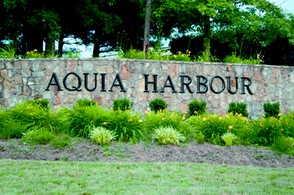Growing Middle Class
The hospitality industry (food and lodging) attracted some commerce along the U.S. Route 1 corridor until the I-95 era.
Housing – particularly affordable housing for Washington area governmental workers and for returning veterans and, in the Baby Boom era, increased populations – became a Stafford growth industry. Relatively cheap land, relatively low taxes, and a suburban/rural life style attracted many. Governed somewhat by variable gas prices inflicting pain on Washington commuting, Stafford began a sustained growth period in the 1960s-1970s which has not subsided into the twenty-first century.
For example, Aquia Harbour first sold lots to individuals in the 1960s. By the 1970s, it became a popular middle-class neighborhood with many amenities such as marina, golf course, pools, playgrounds, stables, and ball fields.
Stafford County’s population growth and the concept of franchises spawned all of the businesses associated with suburban and even urban life. New businesses brought new jobs and population growth increased the demand for better schools, more churches, and recreational facilities.

